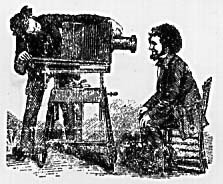1). Persepolis wasnt so much a story with a plot as it was a memoir of Marjane Satrapi and her life growing up in Iran during the revolution. As the graphic novel progresses, you can tell that her understanding of the real world does as well. In the beginning, she believes what she is taught in school and is conflicted when her parents try to explain otherwise and what is happening with their government. The story is a good narrative to get a sense of how a child views war and what is "morally" right. The war causes her family to split up, while she goes to live and attend school in Europe where she experiences typical adolescent trivialites: sex, drugs, rebellion, love, etc. She goes through an identity crisis when she visits Iran and she feels like she doesnt belong here, as well as not belonging in Europe.
2). Themes/Main Issues:
- Identity Crisis; Marjane trying to be true to herself and her heritage while finding an identity for herself.
- Marxism, materialism, and class order
- Family Relations
- Power
- Self awarness and education
3). Marjane Satrapi creates visual pictures that are often dark, black in background, and with a lot of shadow. This emphasizes the dreary times of the war and how she is feeling (lost or all alone). The panels are often mixed up, averaging about 9 panels per page. But when she feels something is especially important, she will dedicated a whole page to the illustration. Her visual arts are very well put together and it correlates better with the story.
announcements
This blog was created by and for students in an Introduction to Cultural Studies class at the University of Washington. Through an investigation of urban experience and representation--in theory, in graphic novels and in our own "readings" of Seattle's University District--we considered the formation and history of cultural studies as an (anti)discipline, with a special emphasis on the questions, "What does cultural studies do, and how do you do cultural studies?"
If you'd like to know more about the class, the blog or our U-District artifact project, please contact Gabrielle Dean: gnodean@u.washington.edu.
If you'd like to know more about the class, the blog or our U-District artifact project, please contact Gabrielle Dean: gnodean@u.washington.edu.
Subscribe to:
Post Comments (Atom)
blog archive
-
▼
2008
(92)
-
▼
May
(26)
- Seattle U District: City Artifacts Map
- City Artifacts: What and Where?
- Researching History and its Representations...
- Palestine
- Persepolis 1 & 2
- Shutterbug Follies
- A Scanner Darkly
- Maus I & II
- A Scanner Darkly
- Maus I & II
- Shutterbug Follies
- Persepolis 1 and 2
- Postcards: True Stories that Never Happened
- Maus I & II
- Postcards: True Stories that Never Happened
- Persepolis 1 & 2
- Mail Order Bride
- Mail Order Bride: Mark Kalesniko
- Persepolis 1 & 2
- Shutterbug Follies
- Maus I and II
- Palestine
- Postcards: True Stories That Never Happened
- PALESTINE
- Postcards: True Stores That Never Happened
- Shutterbug Follies
-
▼
May
(26)

No comments:
Post a Comment